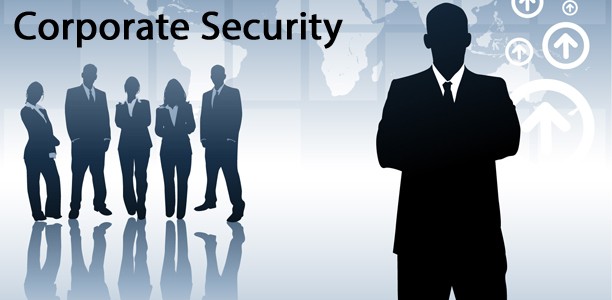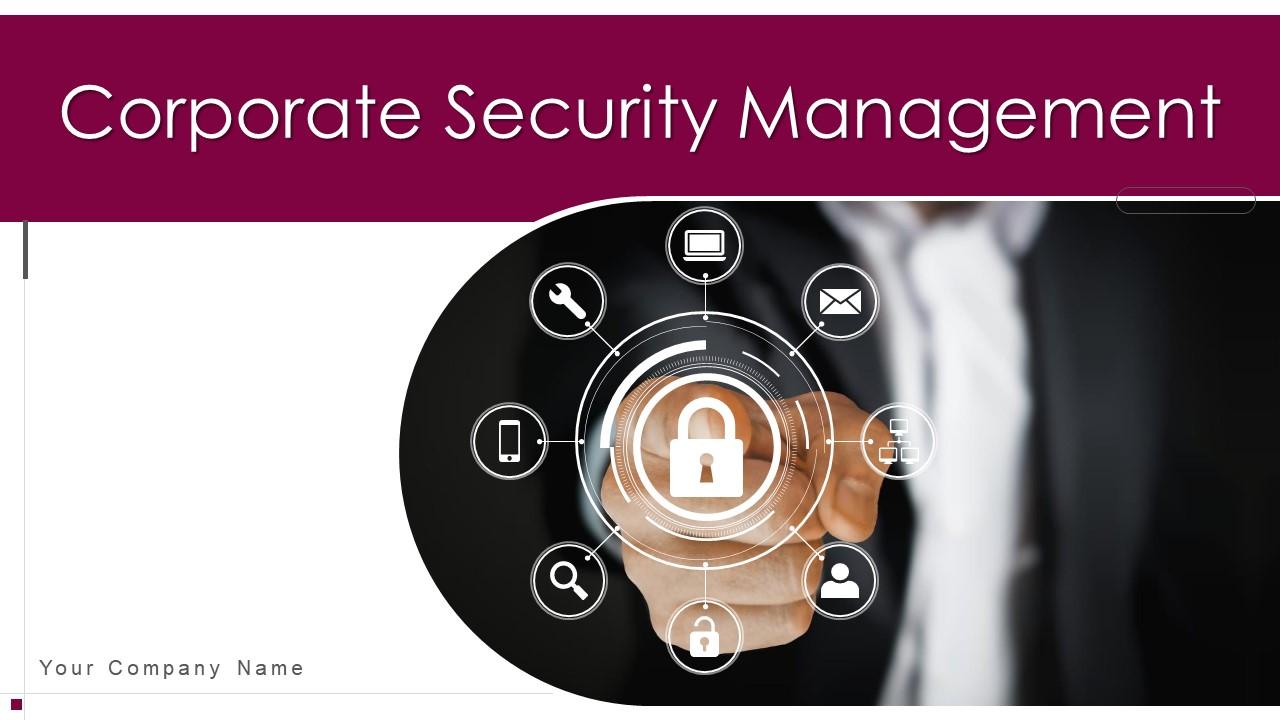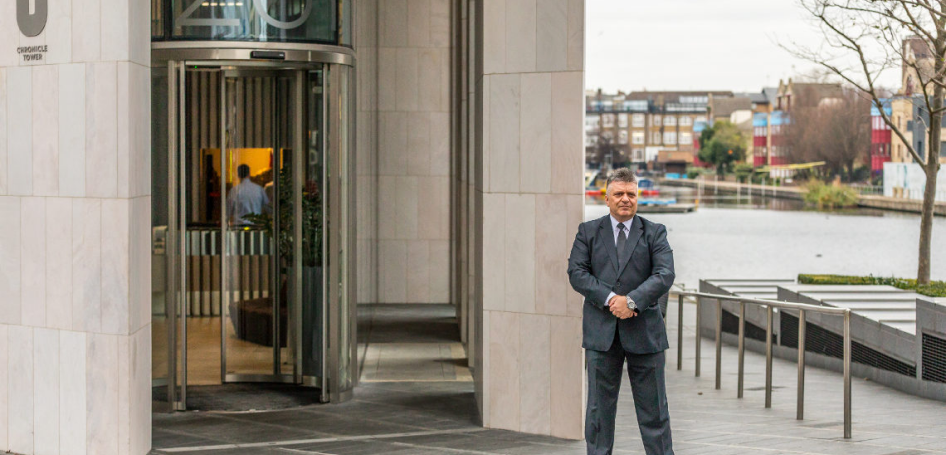Securing Success: A Deep Dive into Corporate Security Techniques
Securing Success: A Deep Dive into Corporate Security Techniques
Blog Article
From Cybersecurity to Physical Measures: Enhancing Business Safety And Security in a Transforming World
In today's rapidly progressing electronic landscape, the significance of business protection can not be overemphasized. As cyber hazards come to be prevalent and significantly advanced, companies must go past typical cybersecurity procedures to safeguard their procedures and properties - corporate security. This is where the assimilation of physical protection procedures ends up being essential. By integrating the toughness of both cybersecurity and physical safety, companies can produce a thorough protection technique that deals with the diverse range of threats they deal with. In this conversation, we will certainly check out the changing hazard landscape, the requirement to incorporate cybersecurity and physical safety and security, the execution of multi-factor authentication procedures, the relevance of worker understanding and training, and the adaptation of security procedures for remote workforces. By analyzing these crucial areas, we will certainly obtain useful understandings into exactly how companies can strengthen their business safety in an ever-changing world.
Comprehending the Changing Risk Landscape
The evolving nature of the contemporary globe demands a thorough understanding of the transforming threat landscape for efficient corporate safety and security. In today's electronic and interconnected age, dangers to business security have actually ended up being much more complicated and innovative. As innovation developments and businesses become significantly reliant on electronic facilities, the possibility for cyberattacks, data violations, and other safety violations has actually considerably boosted. It is critical for organizations to stay notified and adjust their safety and security determines to resolve these evolving risks.
One trick facet of recognizing the altering hazard landscape is identifying the various kinds of dangers that organizations encounter. Cybercriminals are continuously establishing new strategies to exploit susceptabilities in computer systems and networks. These hazards can vary from malware and ransomware assaults to phishing rip-offs and social design techniques. Additionally, physical hazards such as burglary, vandalism, and corporate reconnaissance stay common concerns for companies.
Tracking and evaluating the danger landscape is important in order to identify prospective dangers and vulnerabilities. This involves remaining updated on the most up to date cybersecurity fads, assessing danger knowledge records, and carrying out routine danger assessments. By recognizing the transforming risk landscape, companies can proactively apply suitable security actions to minimize threats and secure their properties, reputation, and stakeholders.
Integrating Cybersecurity and Physical Safety
Integrating cybersecurity and physical safety and security is vital for detailed company protection in today's electronic and interconnected landscape. As companies significantly depend on modern technology and interconnected systems, the borders between physical and cyber hazards are becoming blurred. To successfully protect against these dangers, a holistic method that combines both cybersecurity and physical protection procedures is crucial.
Cybersecurity concentrates on securing electronic possessions, such as systems, networks, and information, from unauthorized access, interruption, and burglary. Physical safety, on the other hand, includes actions to protect physical possessions, individuals, and centers from risks and susceptabilities. By integrating these two domain names, organizations can deal with susceptabilities and hazards from both digital and physical angles, thus improving their total safety and security stance.
The combination of these 2 disciplines permits for an extra comprehensive understanding of safety dangers and allows a unified feedback to occurrences. For example, physical gain access to controls can be enhanced by incorporating them with cybersecurity protocols, such as two-factor verification or biometric identification. Cybersecurity actions can be complemented by physical security actions, such as security electronic cameras, alarms, and safe gain access to points.

Implementing Multi-Factor Authentication Actions
As organizations progressively prioritize comprehensive safety measures, one efficient method is the execution of multi-factor authentication procedures. Multi-factor verification (MFA) is a safety and security method that needs customers to supply several types of recognition to access a system or application. This strategy includes an additional layer of defense by incorporating something the individual knows, such as a password, with something they have, like a finger print or a safety and security token.
By carrying out MFA, companies can dramatically improve their safety and security pose - corporate security. Conventional password-based verification has its constraints, as passwords can be easily jeopardized or neglected. MFA mitigates these risks by adding an additional authentication factor, making it harder for unapproved people to get to sensitive details
There are several types of multi-factor authentication techniques readily available, consisting of biometric authentication, SMS-based confirmation codes, and hardware tokens. Organizations need to examine their details demands and choose the most appropriate MFA option for their demands.
Nonetheless, the implementation of MFA need to be carefully prepared and executed. It is important to strike a balance in useful site between security and functionality to avoid individual aggravation and resistance. Organizations needs to additionally think about potential compatibility problems and provide adequate training and support to ensure a smooth transition.
Enhancing Employee Recognition and Training
To reinforce corporate safety and security, organizations need to focus on improving worker understanding and training. In today's rapidly advancing threat landscape, staff members play a critical duty in safeguarding an organization's sensitive information and properties. However, several safety and security violations take place as a result of human error or absence of understanding. Organizations require to spend in extensive training programs to educate their staff members regarding possible threats and the ideal methods for alleviating them.
Effective worker understanding and training programs need to cover a large range of topics, consisting of information security, phishing strikes, social design, password hygiene, and physical safety and security procedures. These programs need to be tailored to the specific needs and obligations of various worker roles within the company. Normal training workshops, simulations, and sessions can assist employees create the required skills and expertise to recognize and react to safety and security risks effectively.
Furthermore, companies must encourage a culture of security recognition and give continuous updates and pointers to maintain employees notified concerning the newest dangers and reduction methods. This can be done with interior interaction networks, such as e-newsletters, intranet portals, and e-mail campaigns. By cultivating a security-conscious labor force, organizations can substantially minimize the likelihood of safety and security events and safeguard their valuable properties from unauthorized accessibility or compromise.

Adapting Safety And Security Steps for Remote Labor Force
Adjusting company security actions to suit a remote labor force is important in making sure the security of sensitive information and assets (corporate security). With the boosting fad of remote work, companies need to carry out proper protection measures to minimize the dangers connected with this new means of working
One essential element of adapting safety actions for remote job is establishing safe interaction channels. Encrypted messaging platforms and digital personal networks (VPNs) can assist protect sensitive info and prevent unapproved gain access to. In addition, organizations should apply the usage of solid passwords and multi-factor authentication to boost the safety of remote access.
Another vital consideration is the execution of secure remote accessibility services. This involves supplying workers with secure accessibility to business resources and data with online desktop framework (VDI), remote desktop computer protocols (RDP), or cloud-based services. These technologies guarantee that delicate information stays secured while allowing employees to execute their duties successfully.

Last but not least, detailed safety and security awareness training is important for remote staff members. Training sessions should cover ideal methods for securely accessing and managing delicate details, recognizing and reporting phishing efforts, and preserving the overall cybersecurity hygiene.
Final Thought
Finally, as the hazard landscape continues to advance, it is essential for organizations to reinforce their protection measures both in the cyber and physical domains. Integrating cybersecurity and physical protection, executing multi-factor verification procedures, and enhancing staff member awareness and training are necessary steps towards accomplishing robust company safety. Furthermore, adapting protection procedures to fit remote workforces is vital in today's changing globe. By applying these steps, companies can reduce risks and safeguard their important assets from possible threats.
In this discussion, we will discover the transforming risk landscape, the need to incorporate cybersecurity and physical protection, the execution of multi-factor authentication measures, the relevance of worker awareness and training, and the adaptation of protection steps for remote workforces. Cybersecurity steps can be matched by physical safety steps, such as monitoring cameras, alarm systems, and secure accessibility factors.
As organizations progressively focus on comprehensive safety steps, one effective technique is the execution of multi-factor verification steps.In verdict, as the risk landscape continues to progress, it is crucial for organizations to strengthen their protection measures both in the cyber and physical domain names. Incorporating cybersecurity and physical protection, applying multi-factor authentication procedures, and boosting staff member recognition and training are necessary steps towards attaining basics durable business protection.
Report this page